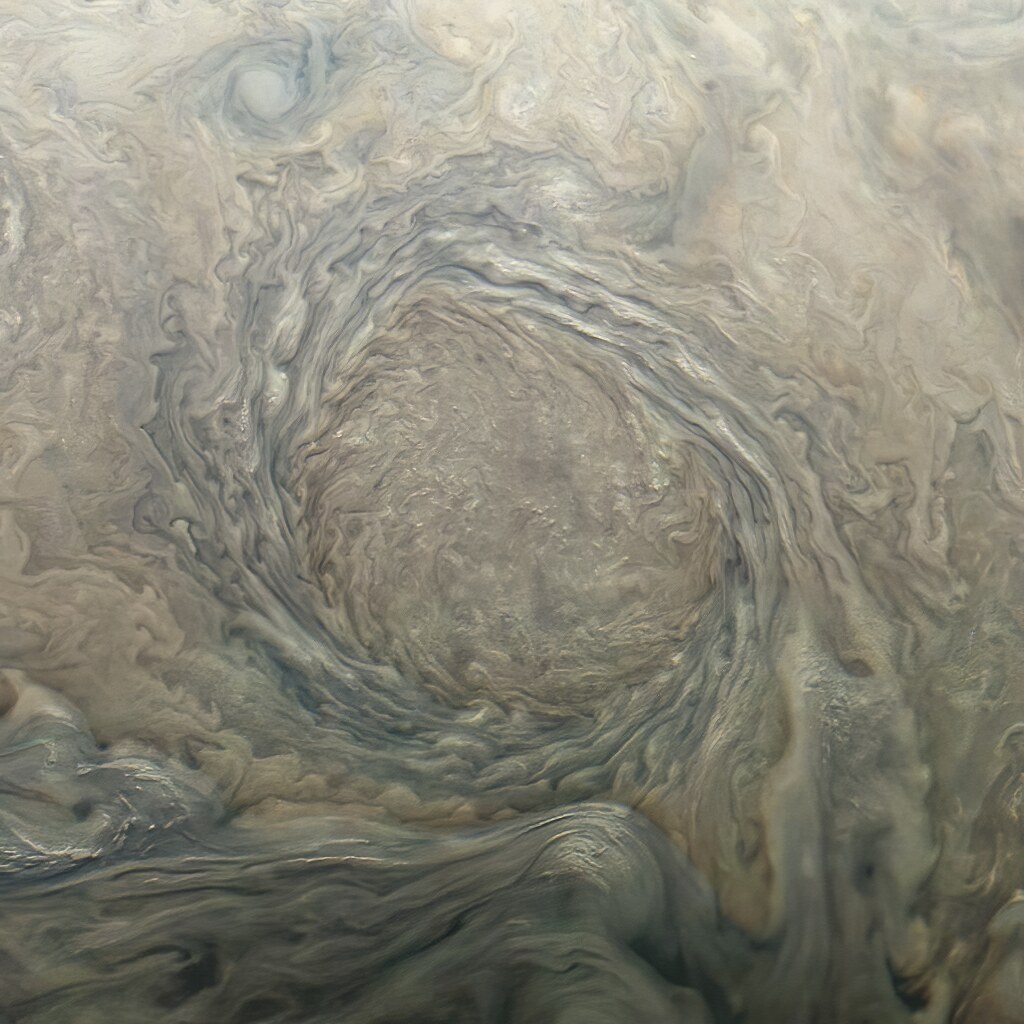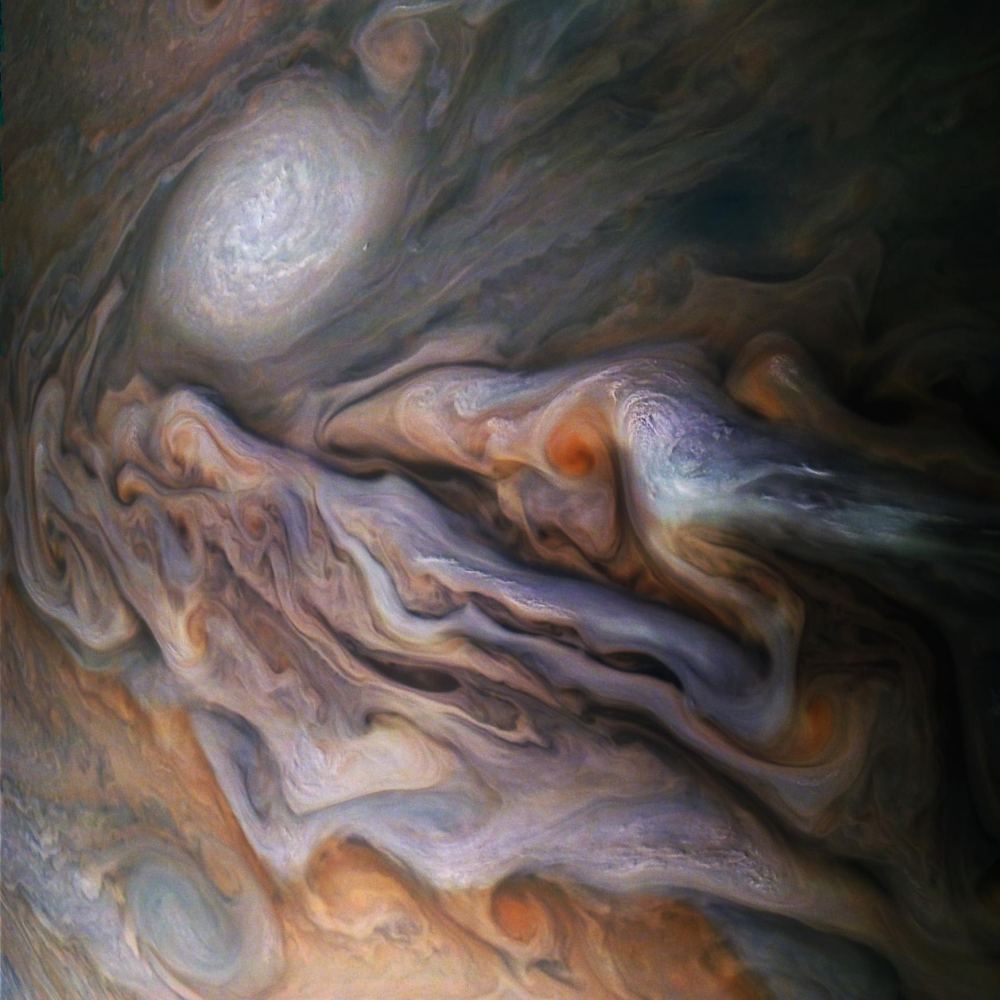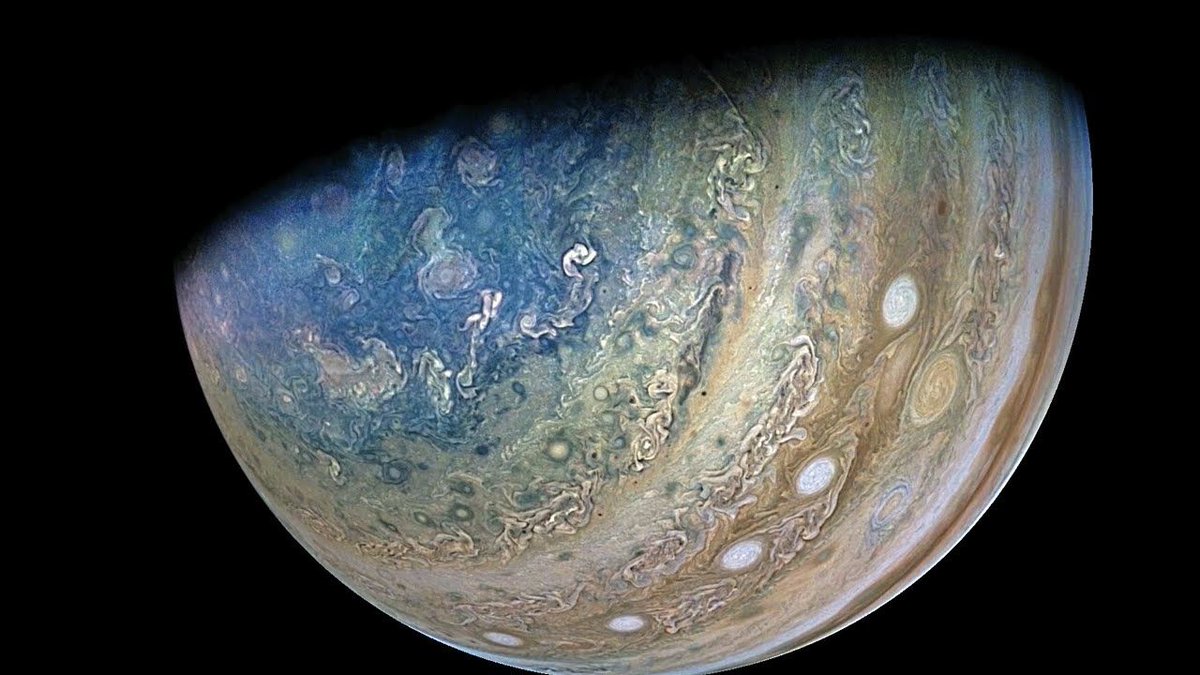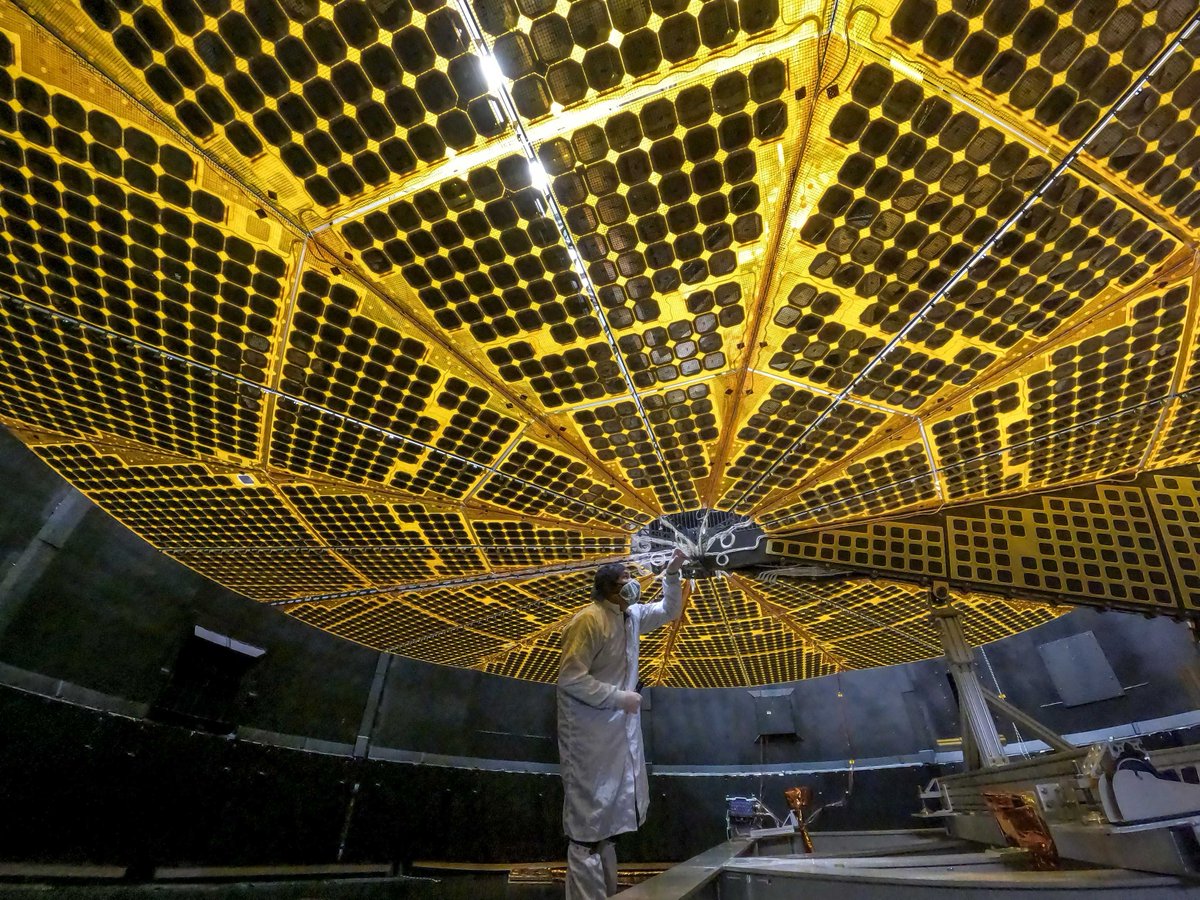Visualizations shape how we perceive space exploration. Whether it’s the Pale Blue Dot, the Hubble Ultra Deep Field, Earthrise, or any other myriad images captured as part of this great endeavor, they all help inspire the next generation of explorers. Now, with advances in image capture and processing technology, we can finally start to take the next step in those visualizations – video. Ingenuity was recently captured on video during its first flight a few months ago. And this week, NASA released a breathtaking video of Juno’s view of Jupiter and Ganymede, one of its moons, as it flew past the gas giant.
Continue reading “This is the View From Juno During its Flyby of Ganymede and Jupiter”Bad News, Life Probably can’t Exist on Venus. Good News, it Could be in Jupiter’s Clouds
For decades, scientists engaged in the search for life in the Universe (aka. astrobiology) have focused on searching for life on other Earth-like planets. These included terrestrial (aka. rocky) planets beyond our Solar System (extrasolar planets) and ones here at home. Beyond Earth, Mars is considered to be the most habitable planet next to Earth, and scientists have also theorized that life could exist (in microbial form) in the cloud tops of Venus.
In all cases, a major focal point is whether or not planets have large bodies of water on their surfaces (or did in the past). However, a new study led by a research team from the UK and German (with support from NASA) has shown that the existence of life may have less to do with the quantity of water and more to with the presence of atmospheric water molecules. As a result, we may have better luck finding life on Jupiter’s turbulent cloud deck than Venus’.
Continue reading “Bad News, Life Probably can’t Exist on Venus. Good News, it Could be in Jupiter’s Clouds”Finally! New Pictures of Ganymede, Thanks to Juno

Well, hello there old friend! This week the Juno mission to the Jupiter system made the first close flyby of Jupiter’s giant moon Ganymede, and as you might guess, the images are spectacular. This is the first time we’ve seen a close-up view of the Solar System’s largest moon since the Galileo mission 20 years ago. Voyager gave us the first views of Ganymede 40 years ago. Now, planetary scientists will be able observe any changes in Ganymede’s surface over time.
But first, the image editing gurus back on Earth are having a go at the raw images sent back by Juno. Our lead image comes from Gerald Eichstädt, who worked his magic to bring out the details of Ganymede, and it’s a stunner.
Continue reading “Finally! New Pictures of Ganymede, Thanks to Juno”Stare Straight Down Into a Giant Storm on Jupiter

A new batch of images recently arrived at Earth from JunoCam, the visible light camera on board the Juno spacecraft at Jupiter. The camera has provided stunning views of the gas giant world since the spacecraft’s arrival in 2016. Citizen scientists and imaging enthusiasts act as the camera’s virtual imaging team, participating in key steps of the process by making suggestions of areas on Jupiter to take pictures and doing the image editing work.
This lead image, edited by Kevin Gill, is another stunner: a look straight down into a giant storm.
And we like Kevin’s attitude about this whole process:
Continue reading “Stare Straight Down Into a Giant Storm on Jupiter”Trojan Mission Lucy Tested its Solar Panels for the First Time. Those Things are Huge
Space missions often have to go where the sun don’t shine. Or at least where it shines very faintly. That is particularly important if the mission draws its power from the sun. Luckily, engineers have a way of dealing with that problem – just make really really big solar panels. That is exactly what they did for Lucy, a mission to visit the Trojan asteroids around Jupiter. Those sails have now been tested on the ground, and they are magnificent.
Continue reading “Trojan Mission Lucy Tested its Solar Panels for the First Time. Those Things are Huge”Jupiter’s Great Red Spot has a Dark Secret. It Feeds on Smaller Storms

Jupiter’s Great Red Spot – the largest and most powerful of all the storms in the solar system – has been churning for hundred of years. Recently dozens of smaller storms have slammed into the Red Spot. Those smaller storms only caused superficial damage – and may have ended up feeding the beast itself.
Continue reading “Jupiter’s Great Red Spot has a Dark Secret. It Feeds on Smaller Storms”Jupiter has Added a Comet to its Trojan Collection

Jupiter is notorious for capturing objects that venture too close to the gas giant and its enormous pull of gravity. Asteroids known as Jupiter Trojans are a large group of space rocks that have been snared by the planet, which usually remain in a stable orbit near one of the Jupiter’s Lagrangian points.
But now, the Hubble Space Telescope has spotted a comet near Jupiter’s Trojan asteroid population. This is the first time a comet has been found in this region, and the team of scientists studying the object – named P/2019 LD2 (LD2) – think the unexpected comet is only a temporary visitor.
Continue reading “Jupiter has Added a Comet to its Trojan Collection”Juno Just Saw a Spacerock Crash Into Jupiter
Timing is extraordinarily important in many aspects of astronomy. If an astronomer or their instrument is looking the wrong way at the wrong time they could miss something spectacular. Alternatively, there are moments when our instruments capture something unexpected in regions of space that we were searching for something else. That is exactly what happened recently when a team of scientists, led by Rohini Giles at the Southwest Research Institute, saw an image of what is likely a meteor impacting Jupiter’s atmosphere.
Continue reading “Juno Just Saw a Spacerock Crash Into Jupiter”Galileo’s Probe Discovered a Mystery at Jupiter, Juno Finally Helped Solve it

In 1995, NASA’s Galileo mission dropped a probe into the atmosphere of Jupiter and found it to be far drier than expected. In 2020, NASA’s follow-up mission Juno explained the mystery: it involves mushballs.
Continue reading “Galileo’s Probe Discovered a Mystery at Jupiter, Juno Finally Helped Solve it”With its New Extension, Juno is Going to be Visiting Jupiter’s Moons

The Juno mission to Jupiter has been extended to September 2025 – or however long the spacecraft can keep operating around Jupiter.
While Juno has so far focused its attention on the giant planet alone, the mission extension will include observations of Jupiter’s rings and large moons, with targeted observations and close flybys planned of the moons Ganymede, Europa, and Io.
This will be the first close flybys of these moons since the Galileo mission in 1995-2003.
Continue reading “With its New Extension, Juno is Going to be Visiting Jupiter’s Moons”



